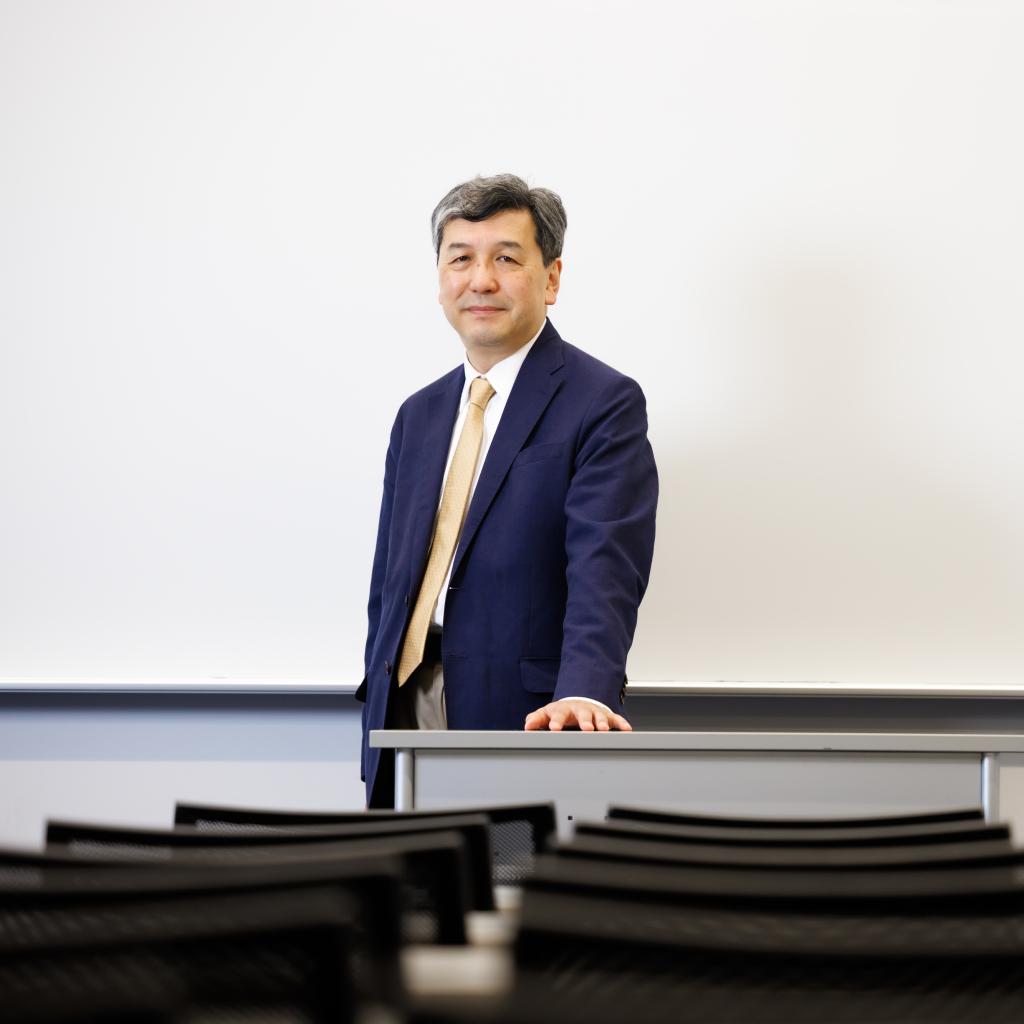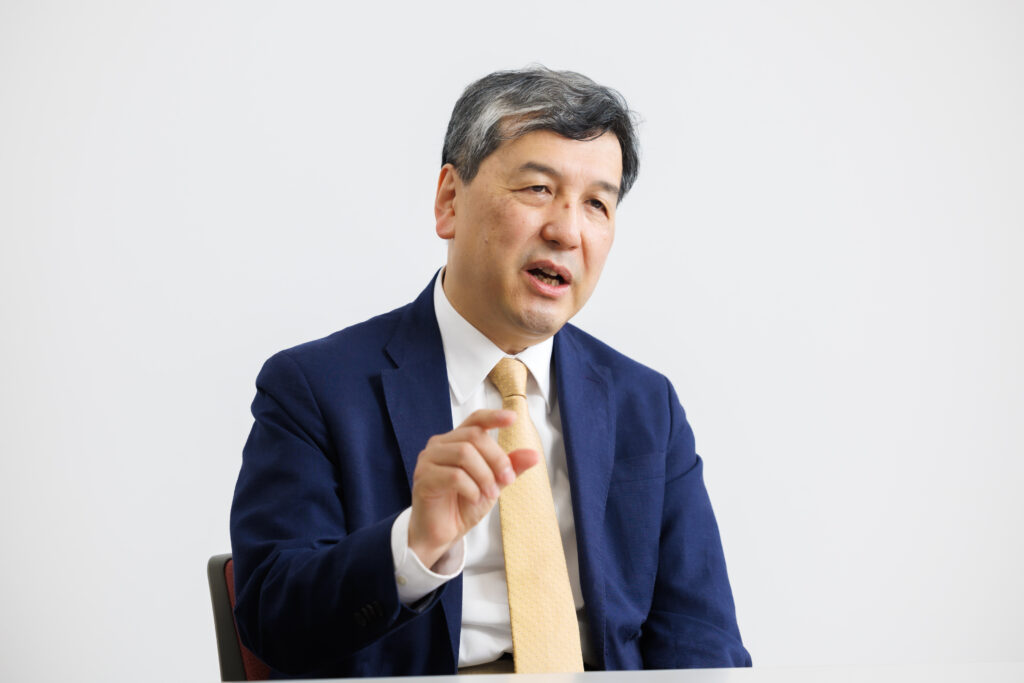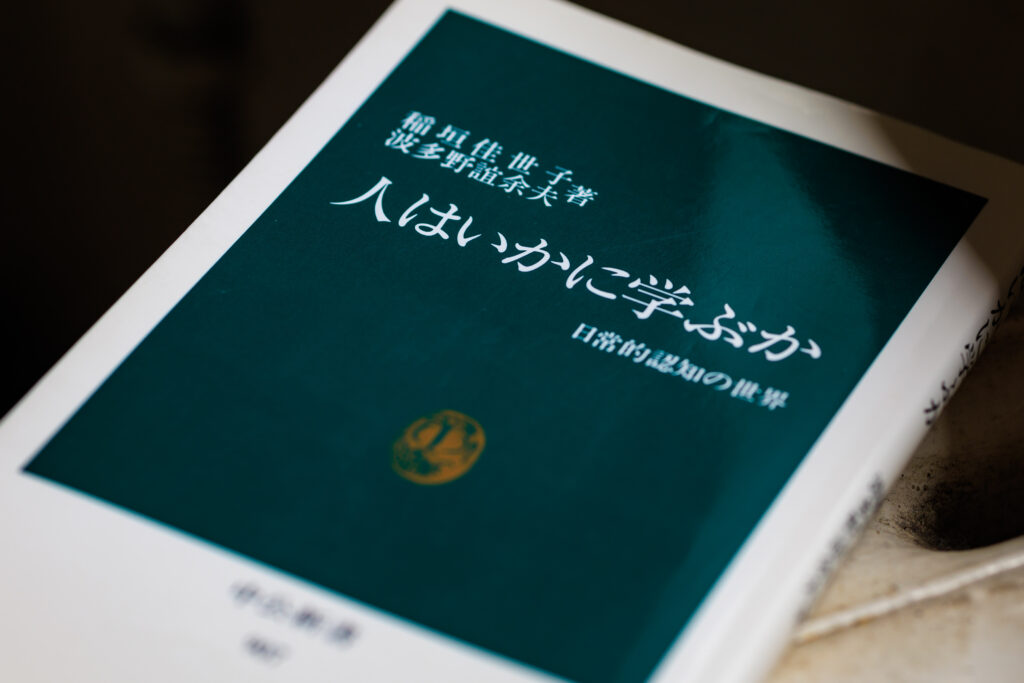
Applying educational psychology to primary and early secondary education, Professor Masahiro Nasu of the Faculty of Human Sciences works with teachers to create classes that will improve learning motivation in children. How are classes that develop the ability to apply knowledge, leading to motivation, and educational reforms pushed by the Ministry of Education connected?
Educational psychology is a discipline that tries to find effective teaching methods by applying psychology. My particular research focus within educational psychology is learning motivation. I have been thinking about what sort of classes would get children in elementary and middle school in particular to be enthusiastic about learning. My research method is called action research, very hands-on: I visit schools and prepare teaching materials with the teachers, and take classes. I have worked with several hundred schools on this research already. Even now, I am involved with about twenty schools.
What got me interested in becoming a researcher was when I was an undergrad at my local university, hoping to be an elementary school teacher. In teacher training, I felt that the classes I taught were worse than those of my fellow trainees, so I told myself I should study a bit more before I stand in front of a class. That was why I decided to learn educational psychology in graduate school. That was when I developed an interest in the psychological mechanisms of emotion and desire to learn.
For example, if a child thinks the reason he didn’t get a good score on his test is because he lacks the ability, and gets depressed as a result, if he then realizes that perhaps the way he studied was wrong, he will be more eager to work hard for the next test. In this way, I learned that emotions can be controlled by changing how we see things, and that method can be applied in actual classrooms. I decided that as a researcher, I wanted to create classes that would make children inspired to study.
Improved desire to study improves truancy rates

To improve children’s desire to study, it’s important to provide instruction that lets them see their own lines of thinking, rather than just rote memorization. For example, when teaching about topics like industry and special products in social studies classes in elementary school, the teacher could lay out the conditions required to discover what the characteristics of that region are, and teach the children to seek them out on their own. Specifically, you could make graphs or topographical maps showing the rainfall and temperature of a region, or use legends or lifestyle customs.
If a class is taught in a way that gets the pupils to be aware of these conditions, they will be able to use the tools required for thinking, such as graphs and topographical maps, to look for the answers. Even if it’s a region they don’t know, they will be able to infer what its characteristics are. And if the results are as they expected, that will make them happy, and they will find the classes more and more enjoyable. While listening to the teacher talk, they will be able to get ahead of the teacher, thinking about the best topic to discuss next.
I have learned that classes that improve the desire to study also improve truancy rates. If learning is fun, then going to school is also fun. I have seen cases where, even if for family reasons the parents can’t wake up in the mornings, the children can get their own breakfast and go to school themselves. The entire school’s concerted efforts had results. I believe this is truly a feat of education.
Education that supports a bright future for children
Today, in an era where we can use our smartphones to instantly find the answer to anything we don’t know, children need to learn how to use knowledge and information, like in the social studies class I mentioned earlier. In the new government curriculum guidelines that came into effect from the 2020 school year, this issue is also incorporated as a point for classes. I look forward to seeing how this educational reform will lead to a bright future for children.
In future, I would like to add classes that use ICT to my research themes. Classes where each student, from elementary to high school, has their own tablet, and teachers and students carry out bidirectional learning. If they can freely access information, children will be able to deepen their learning by going at their own pace and learning style. I believe it would be good to consider better learning methods, including the development of teaching materials.
The book I recommend
“Hito wa ika ni manabu ka” (How Do People Learn)
by Kayoko Inagaki, Giyo Hatano, Chukoshinsho

Based on the ideas of psychology from 1989, this book advocates the importance of considering education and teaching on the assumption that people have an in-born desire to learn. It continues to be read even today because its educational theory is still relevant. I also use it in teaching materials for classes.
-
Masahiro Nasu
- Professor
Department of Education
Faculty of Human Sciences
- Professor
-
Graduated from the Teacher Training Course for Elementary School Teachers at the Faculty of Education, Tokushima University, and received an Ph.D. from the Graduate School of Education, the University of Tokyo. Served as a director of the National Institute for Educational Policy Research and professor in the College of Arts at Rikkyo University, among other positions, before assuming his present position in 2005.
- Department of Education
Interviewed: August 2022